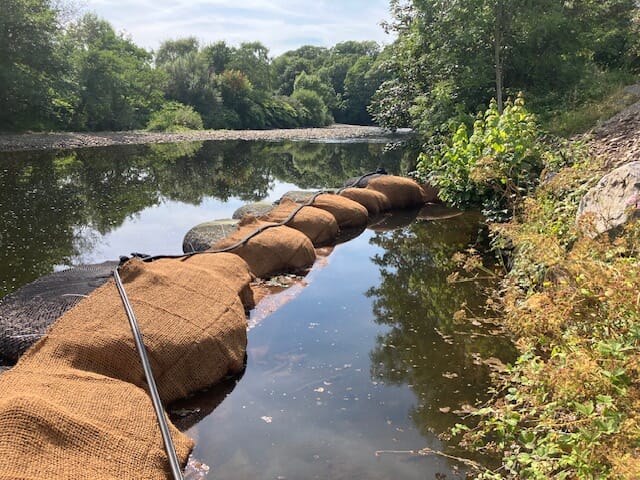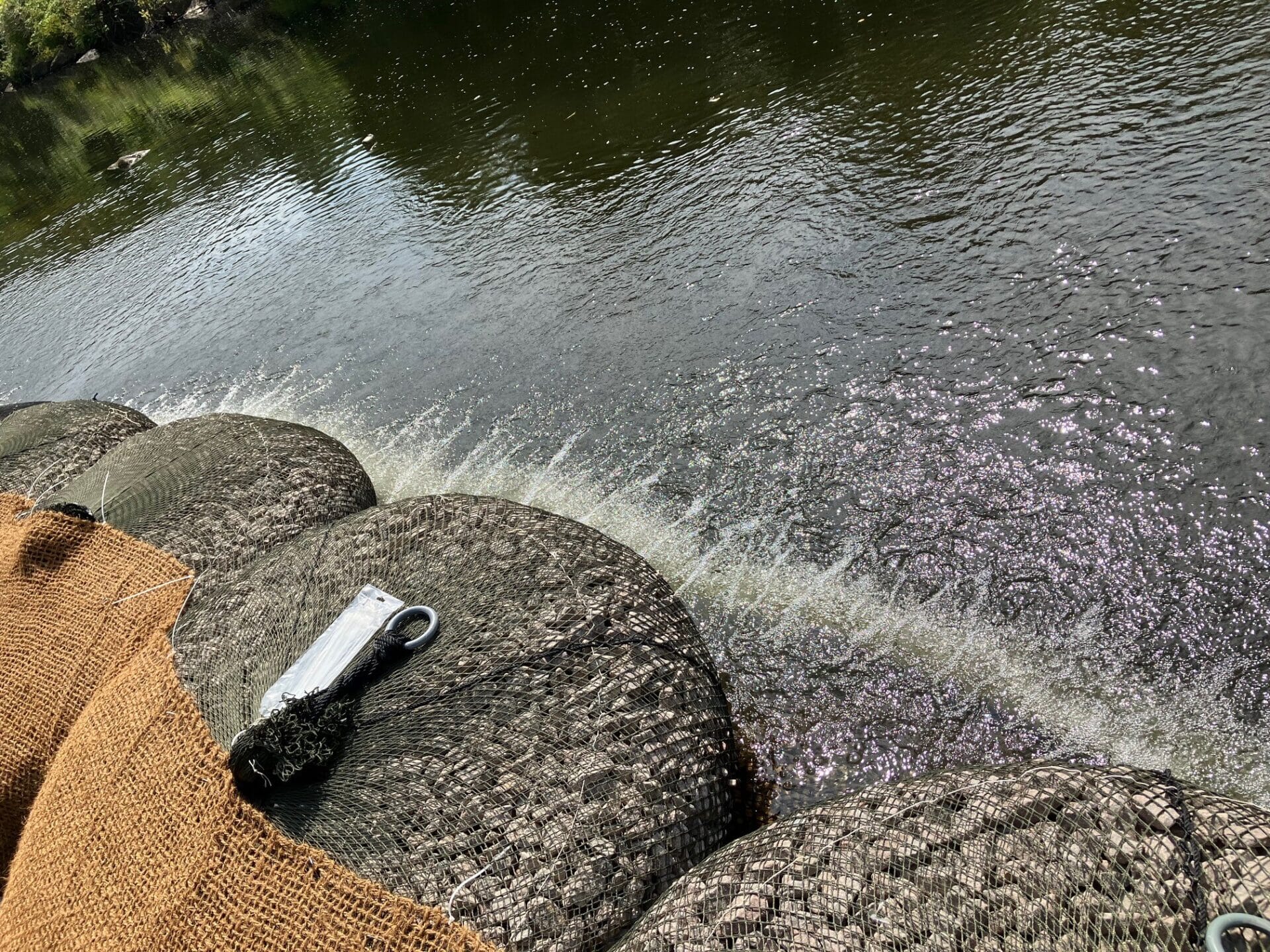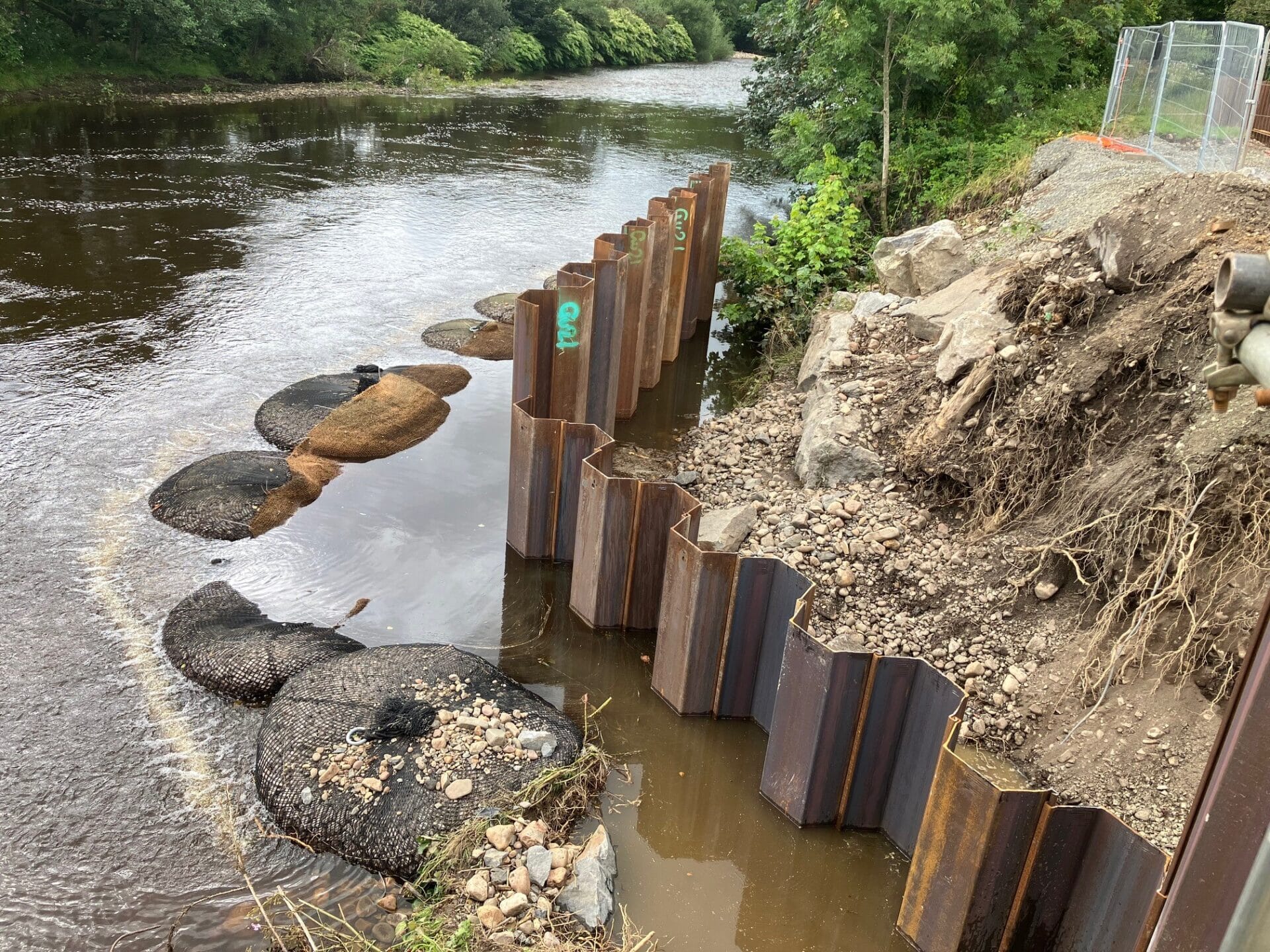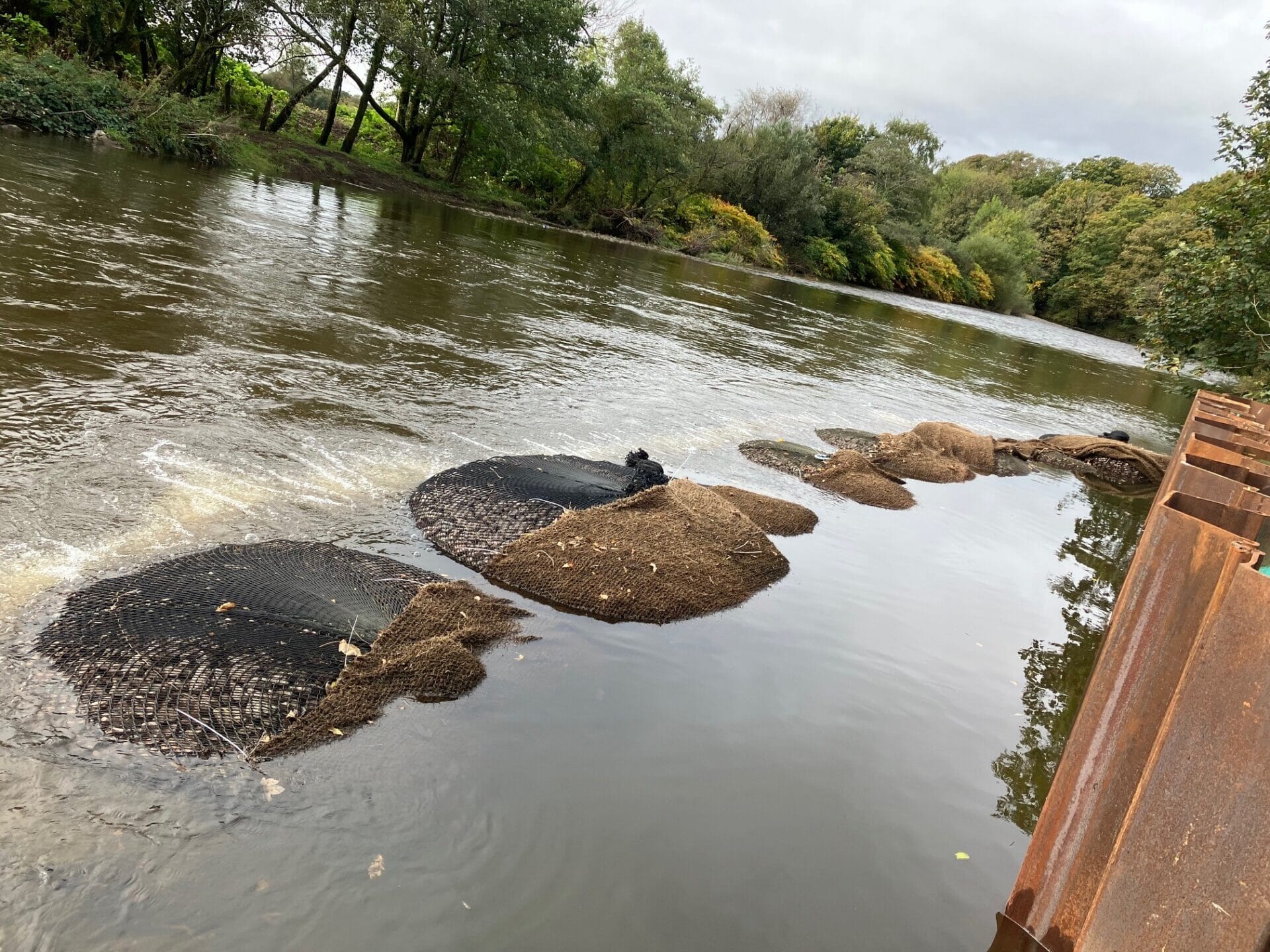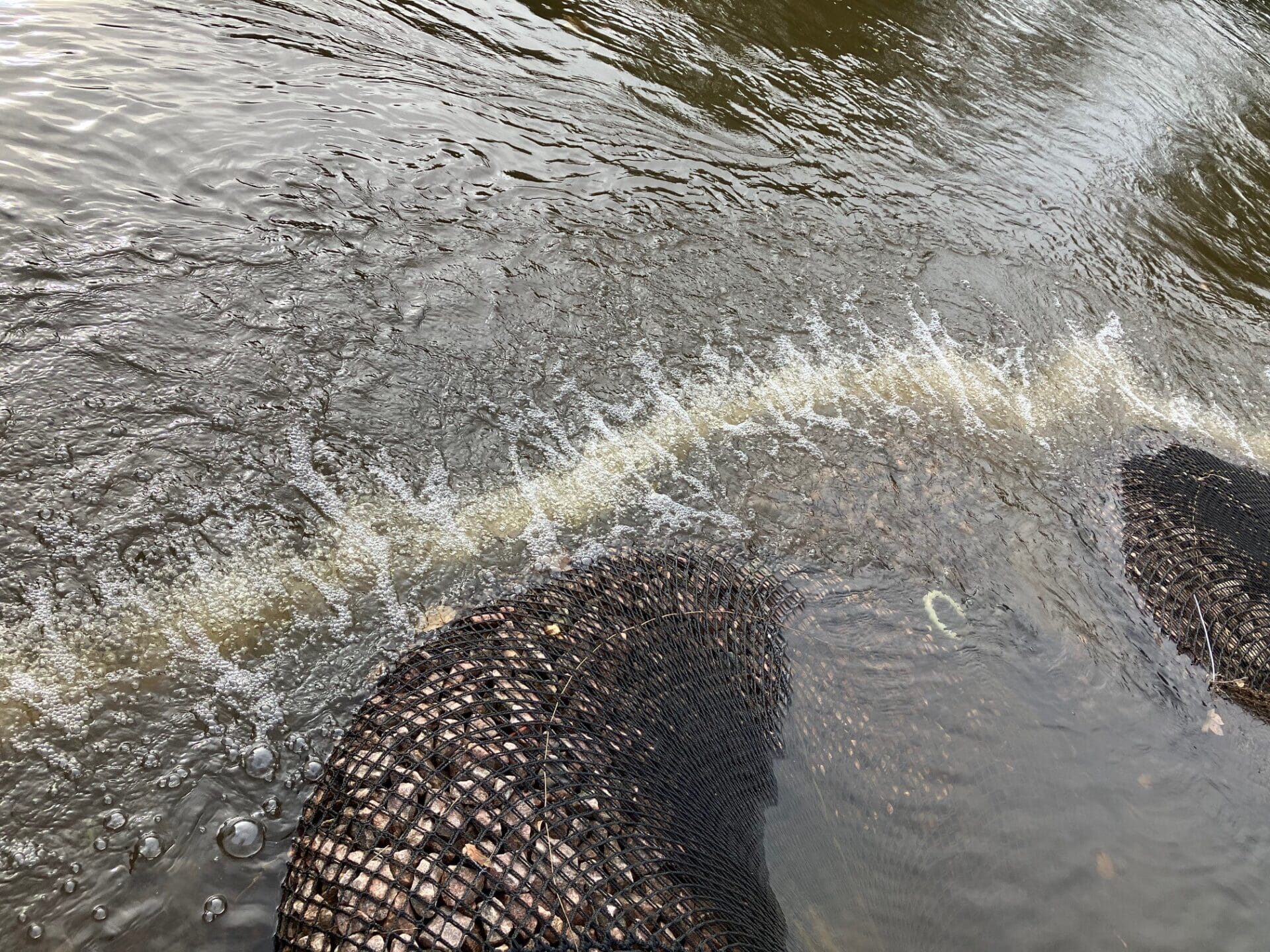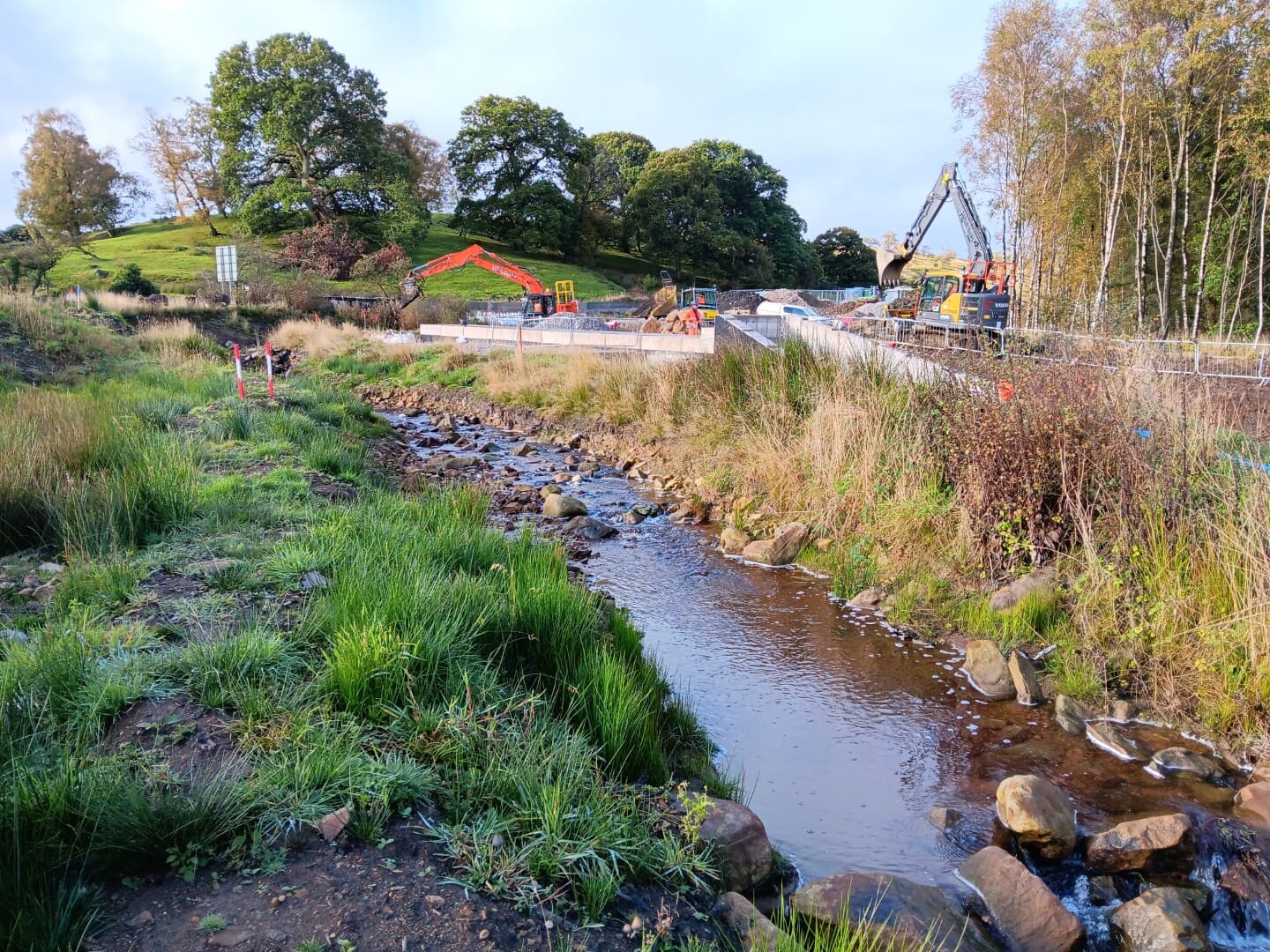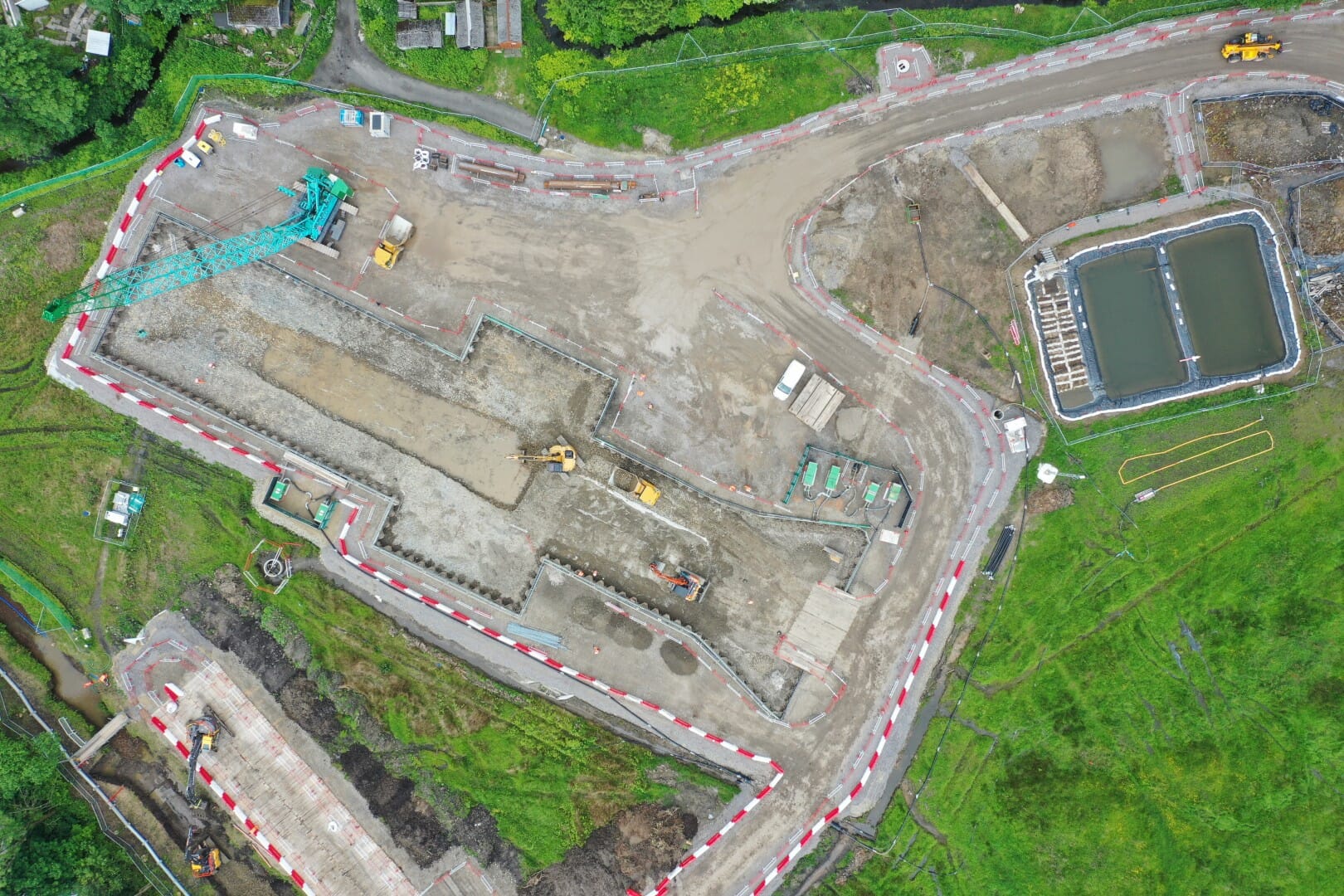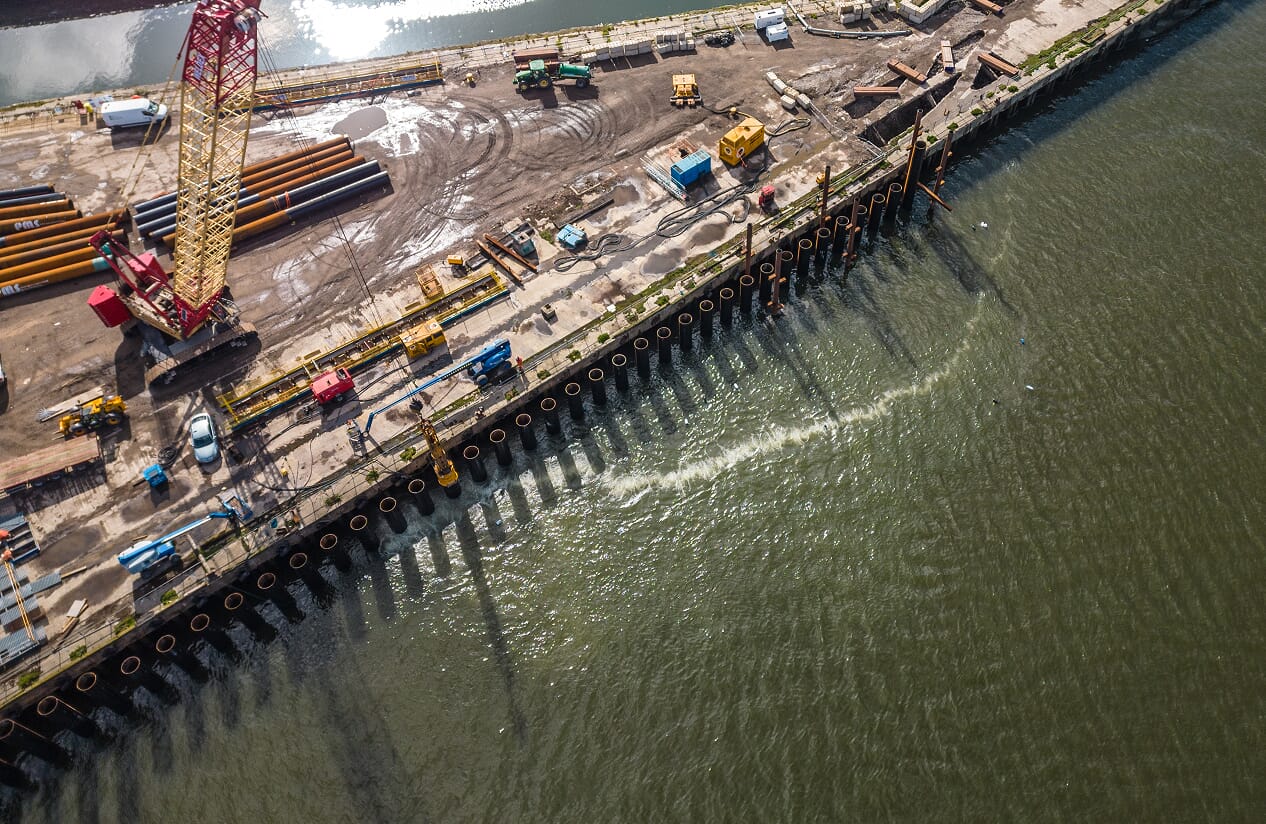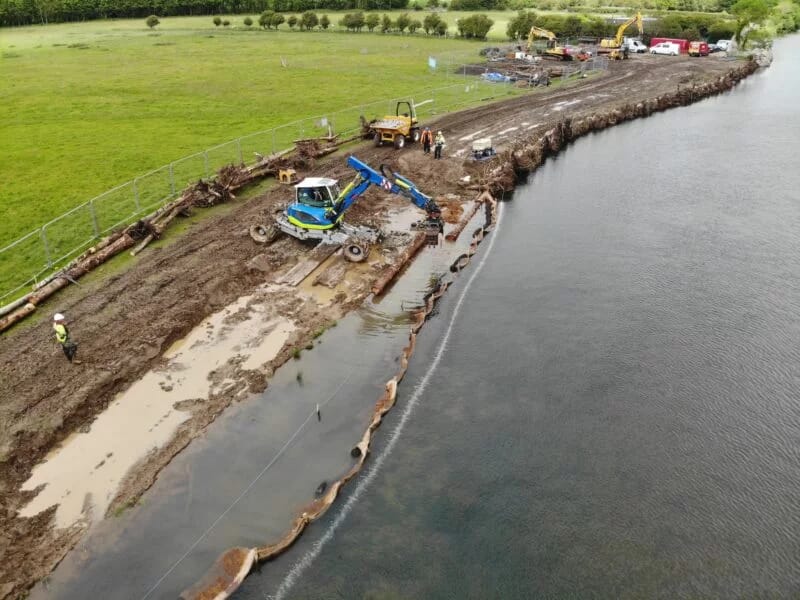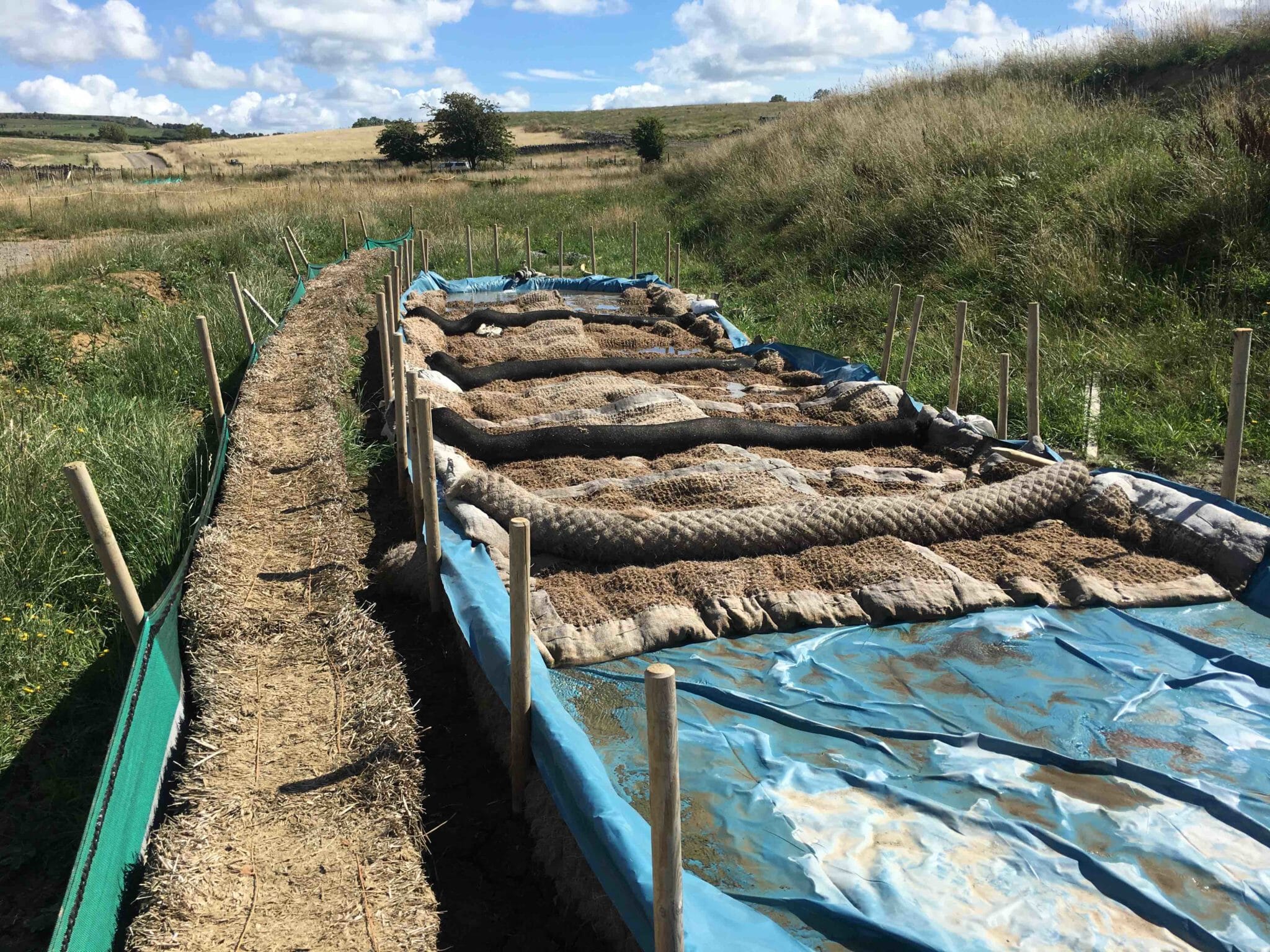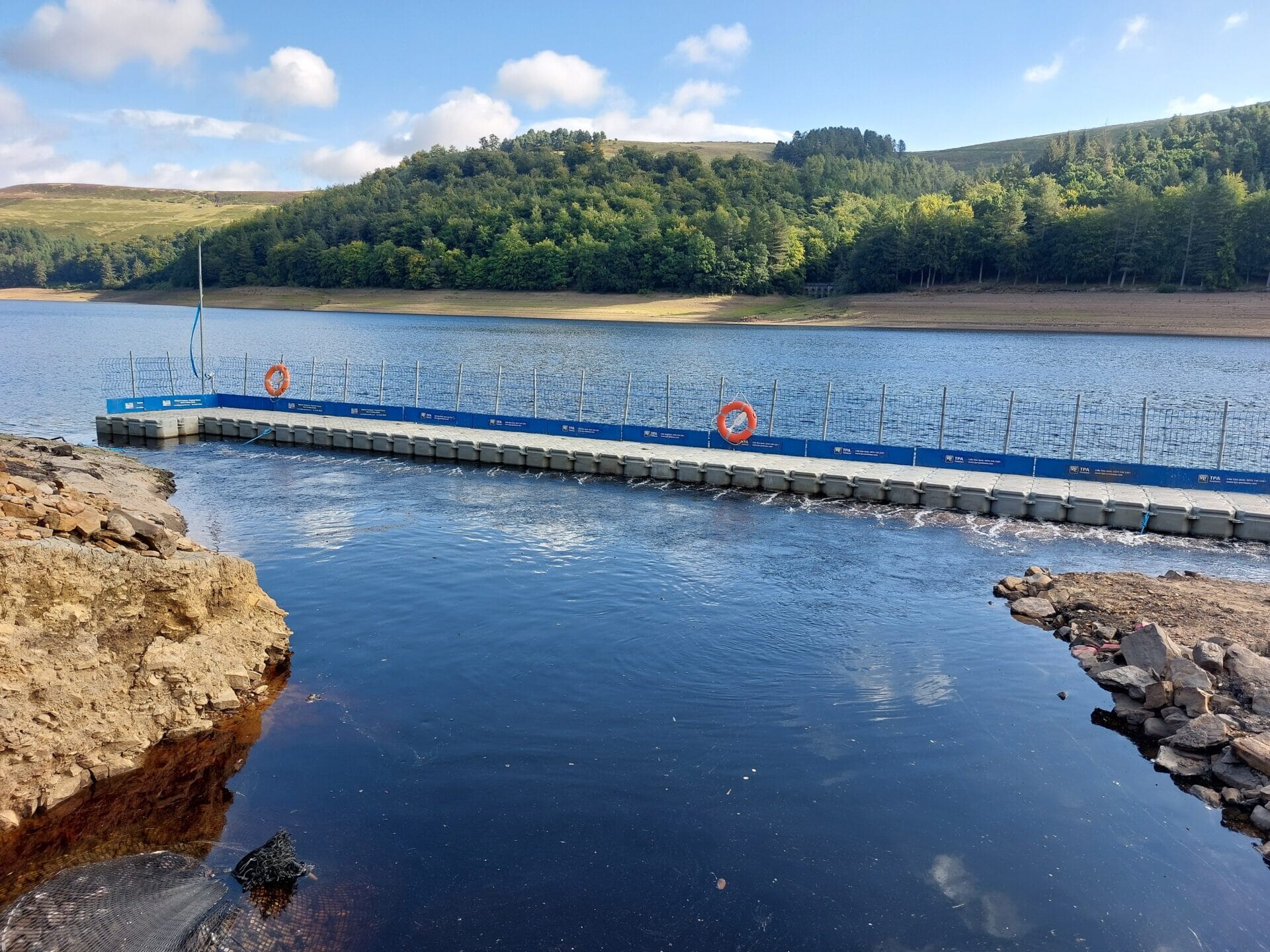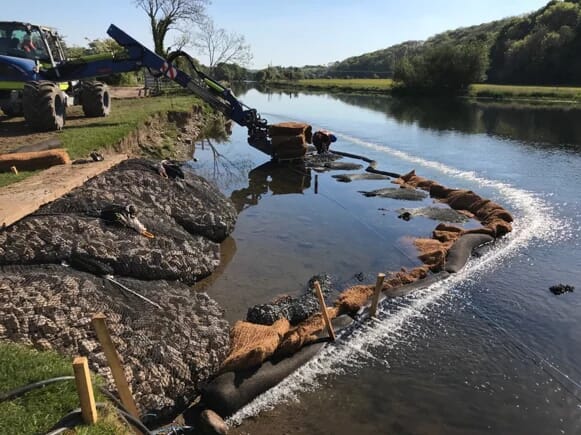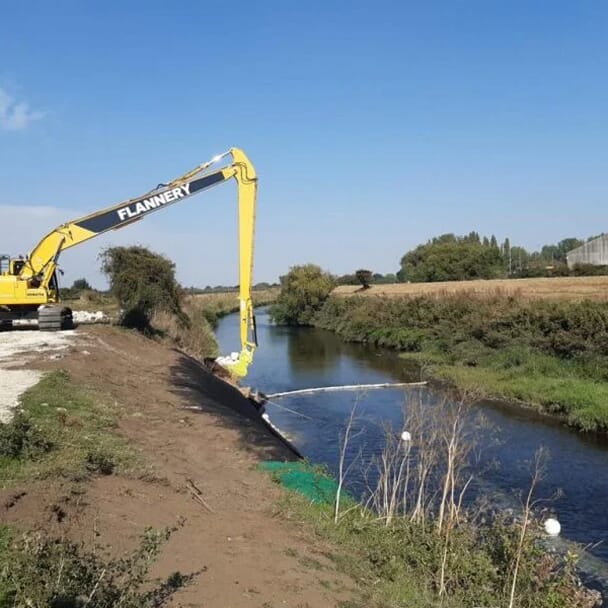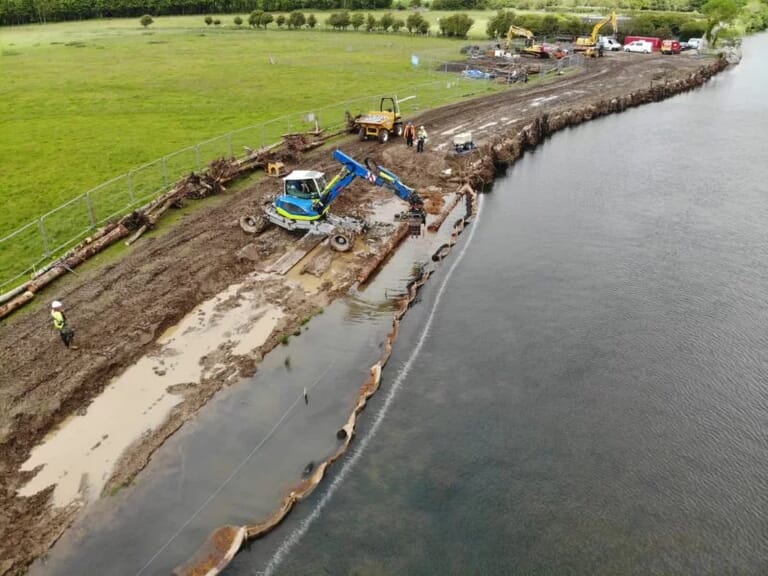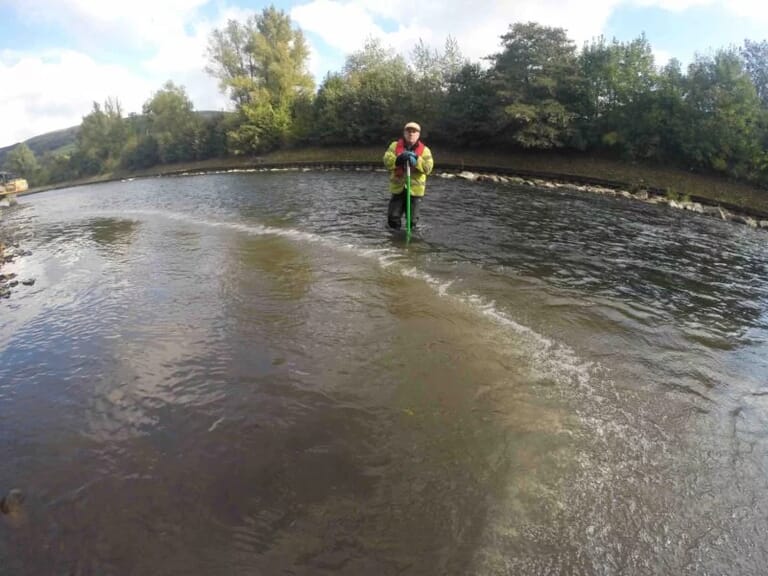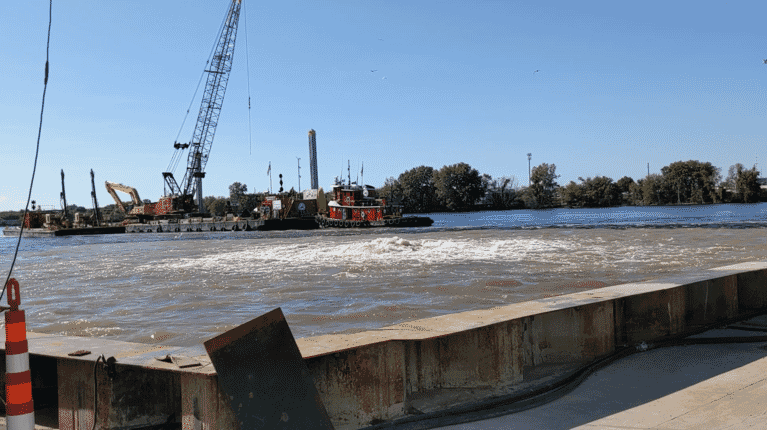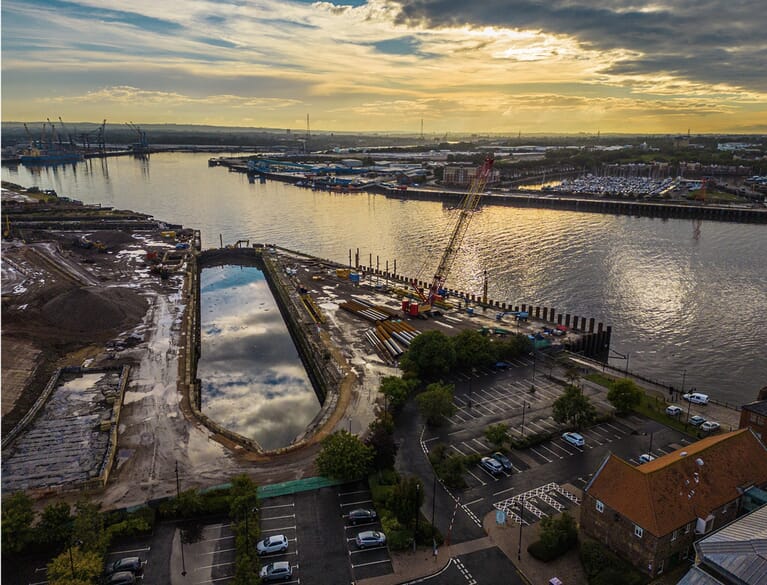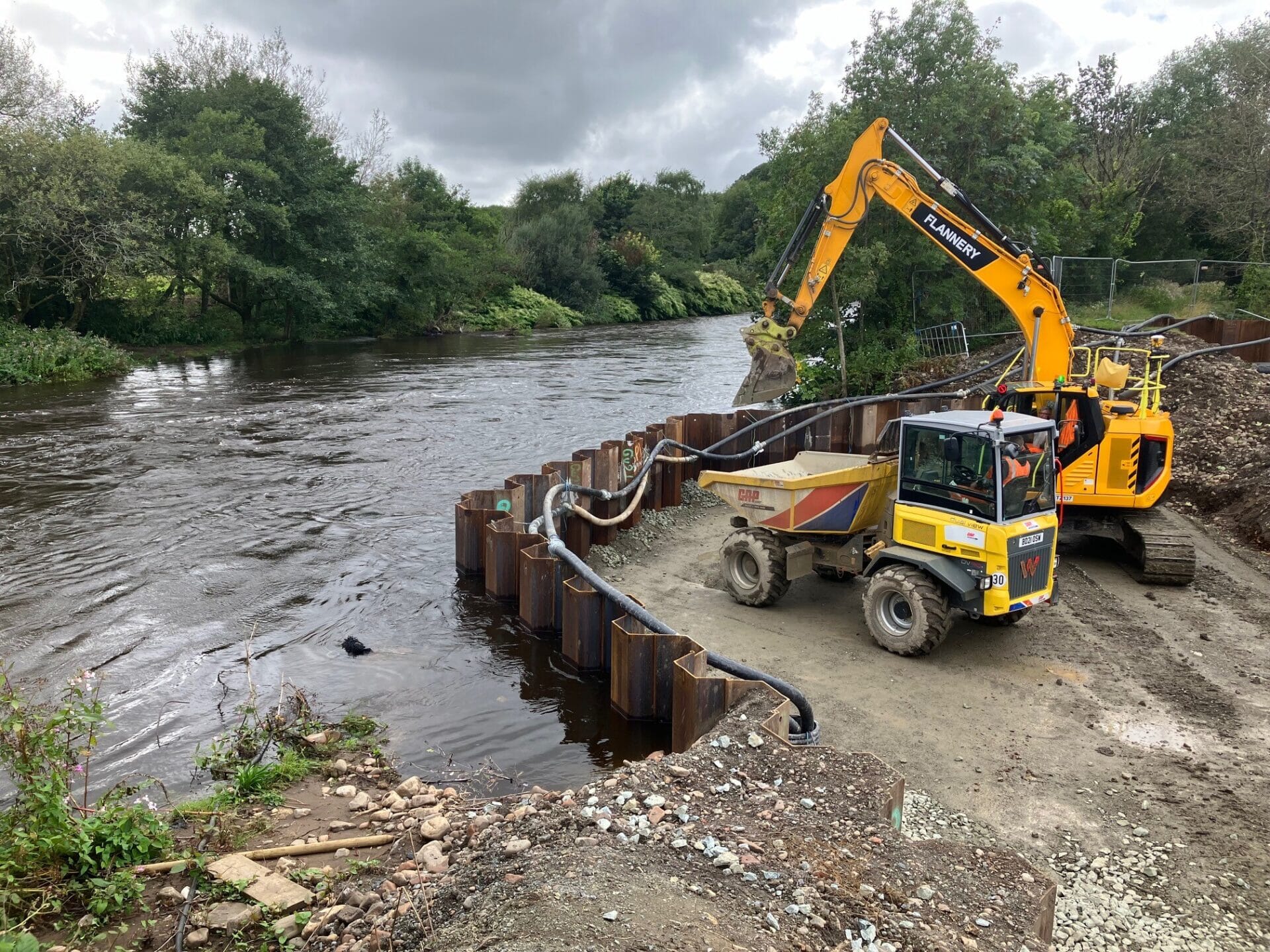
Case Study
Silt pollution mitigation at Trebanos Wastewater Treatment Works
Construction, Infrastructure & DevelopmentClient
Morgan Sindall Infrastructure
Location
River Tawe, Near Swansea
Objective
Constructing a new outfall at the headwall adjacent to the River Tawe
Challenge
Preventing silt pollution whilst doing essential works
The challenge
The project involved constructing a new outfall at the headwall adjacent to the River Tawe, which needed to minimise disruption to the river during installation of the sheet piles.
The scheme required the installation of a piling mat and cantilevered sheet piles which posed environmental risks such as silt pollution.
In-river construction works, such as those at Trebanos Wastewater Treatment Works (WwTW), always pose potential environmental risks, particularly related to siltation and the release of pollutants.
Siltation can lead to:
- Habitat degradation: Excessive silt pollution can harm aquatic habitats, affecting fish spawning grounds and the organisms that live on the riverbed.
- Water quality deterioration: Increased turbidity from silt pollution can reduce light penetration, affecting plant photosynthesis and disrupting the aquatic food chain.
- Pollutant transport: Silt can bind with pollutants like heavy metals and nutrients, easing their transport and potentially leading to contamination of downstream environments.
These issues are problematic because they can lead to long-term ecological damage, affect water treatment processes, and result in regulatory non-compliance.
The River Tawe is a notable watercourse in south Wales, flowing through the Swansea Valley and into Swansea Bay. Efforts to protect it during construction works are crucial for maintaining its ecological health and cultural value.
The solution
Working together with Salix, our Technical Team designed a solution to mitigate silt pollution risks during the installation and removal of a piling mat and cantilevered sheet piles.
Salix provided rock bags and we specified the Bubble Curtain, which was used to wrap the works and create a barrier of air bubbles in the water.
Deflect silt
Bubbles create an upward current that can deflect silt and prevent it from spreading.
Aerate the water
The introduction of air into the water can improve oxygen levels, which is beneficial for aquatic life.
The results
Highly effective aerator
Aeration prevents fish kill and helps maintain water quality health during temporary river works.
Mobile and easy to use
A Bubble Curtain is easy to transport and install. It was used several times on this project.
Versatile design
As well as aerating the entire water column, the Bubble Curtain helped prevent silt created by bank disturbance works from flowing downstream and causing silt pollution.
Stopping silt in its tracks
Sediment dispersal is effectively impeded by air bubble curtains – a study with SEACAMS at Swansea University showed a single bubble curtain restricted around 50% of sediment. Overall the study showed that 3 lines of Bubble Tubing® can impede up to 90% of silt dispersal.
The products
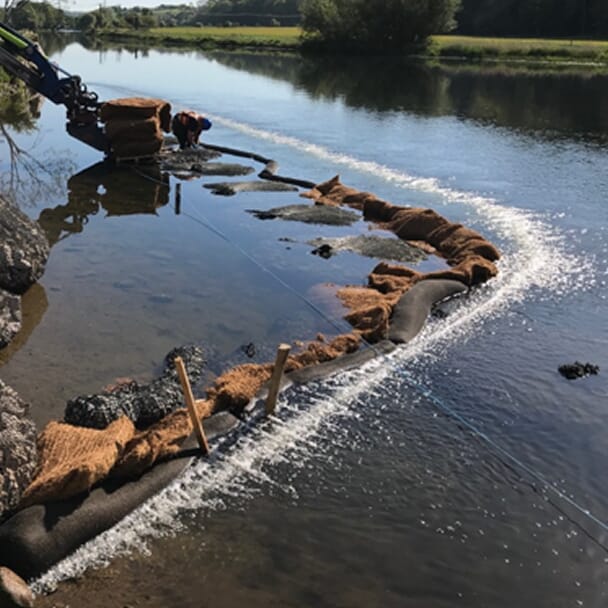
Silt & Debris Bubble Barriers
- Controls sediment plumes, preventing silt and debris spreading in water
- Protects habitats by shielding sensitive aquatic life and ecosystems
- Creates a flexible silt control barrier that is designed to adapt to varying water depths
- Quick to deploy and remove without inhibiting navigation
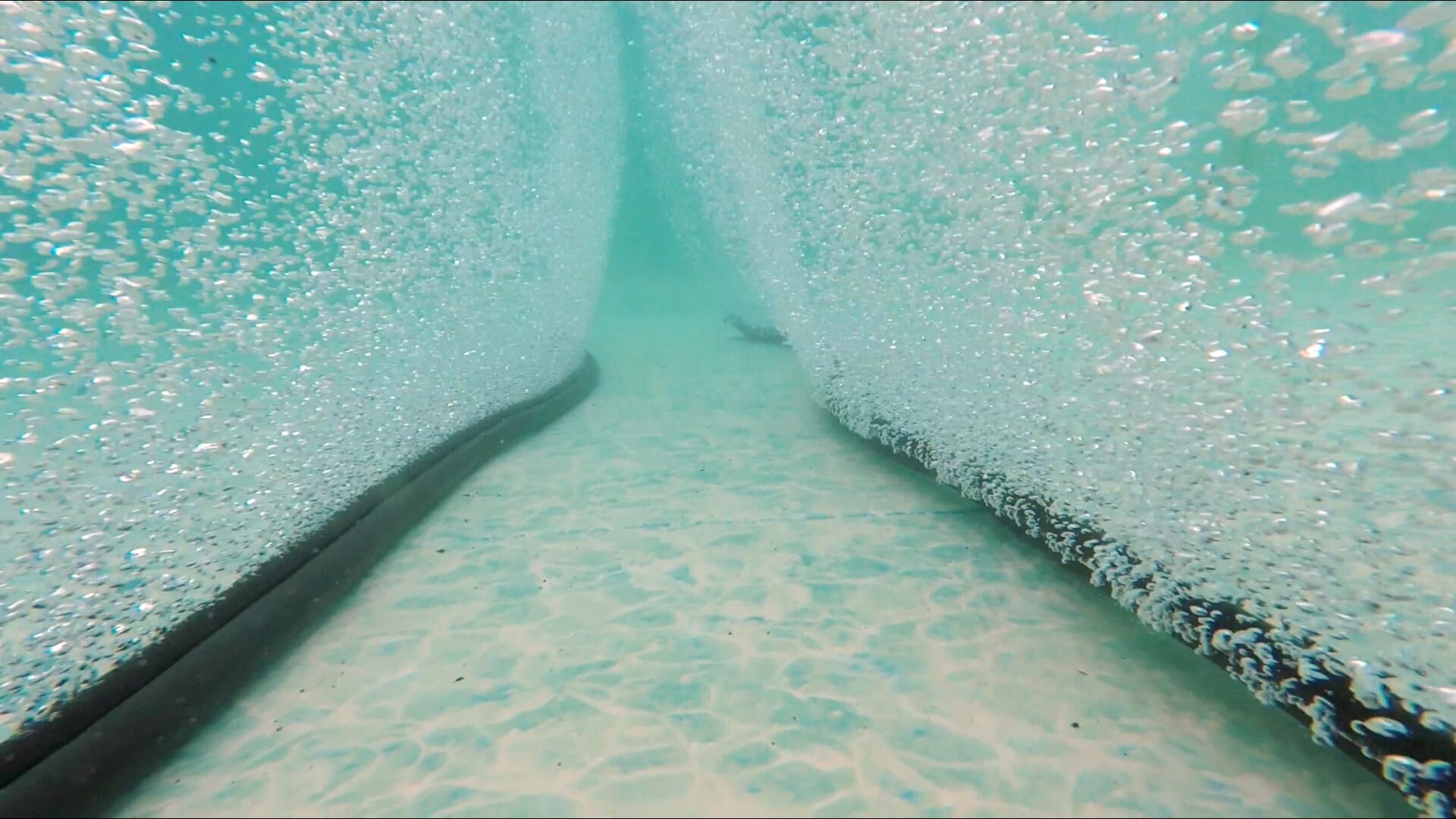
Aeration Bubble Curtains
- Lightweight, modular design allows quick setup in urgent situations
- Fine microbubbles restore dissolved oxygen levels fast, stabilising water quality
- No submerged moving parts means low risk of mechanical failure and minimal maintenance under pressure
- Bubble aeration systems can be adapted to various water bodies or emergency site conditions
